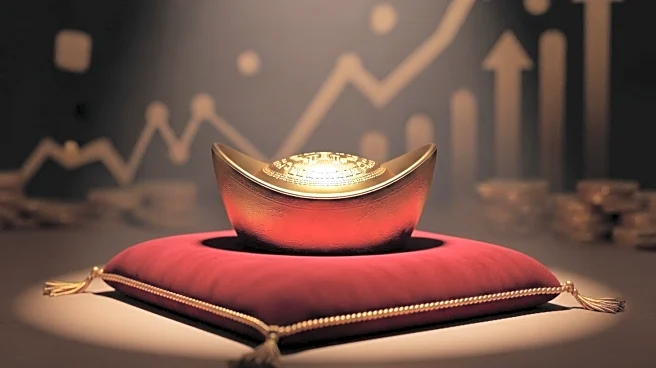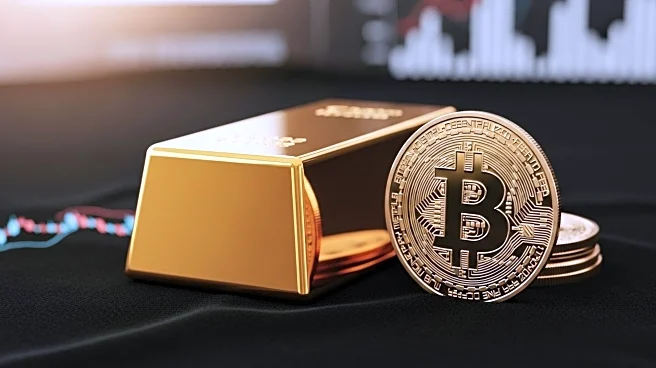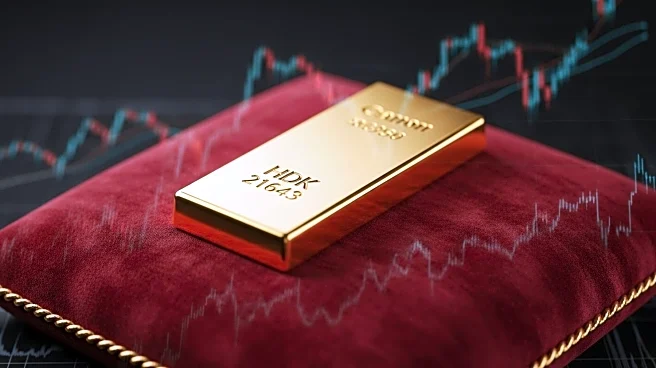What's Happening?
Gold prices have reached a record high above $3,600 per ounce, driven by expectations of an interest rate cut by the Federal Reserve next week. The surge in gold prices follows a weak U.S. jobs report for August, which showed a rise in the unemployment rate to 4.3%. Traders have priced in an 88% chance of a 25 basis points cut, according to the CME FedWatch tool. Lower interest rates decrease the opportunity cost of holding non-yielding bullion and weigh on the dollar, making gold more attractive to investors.
Why It's Important?
The rise in gold prices reflects broader economic uncertainties and geopolitical tensions, which have increased demand for safe-haven assets. As interest rates are expected to decrease, the cost of holding gold becomes more favorable, attracting more investors. This trend highlights the impact of monetary policy on commodity markets and the potential shifts in investment strategies as traders seek stability amid economic volatility.
What's Next?
Attention will shift to upcoming U.S. economic data, including the Producer Price Index and Consumer Price Index, which could provide further clarity on the Federal Reserve's rate cut decision. Additionally, China's continued gold purchases may influence global market dynamics, as central banks adjust their reserves in response to economic conditions.











